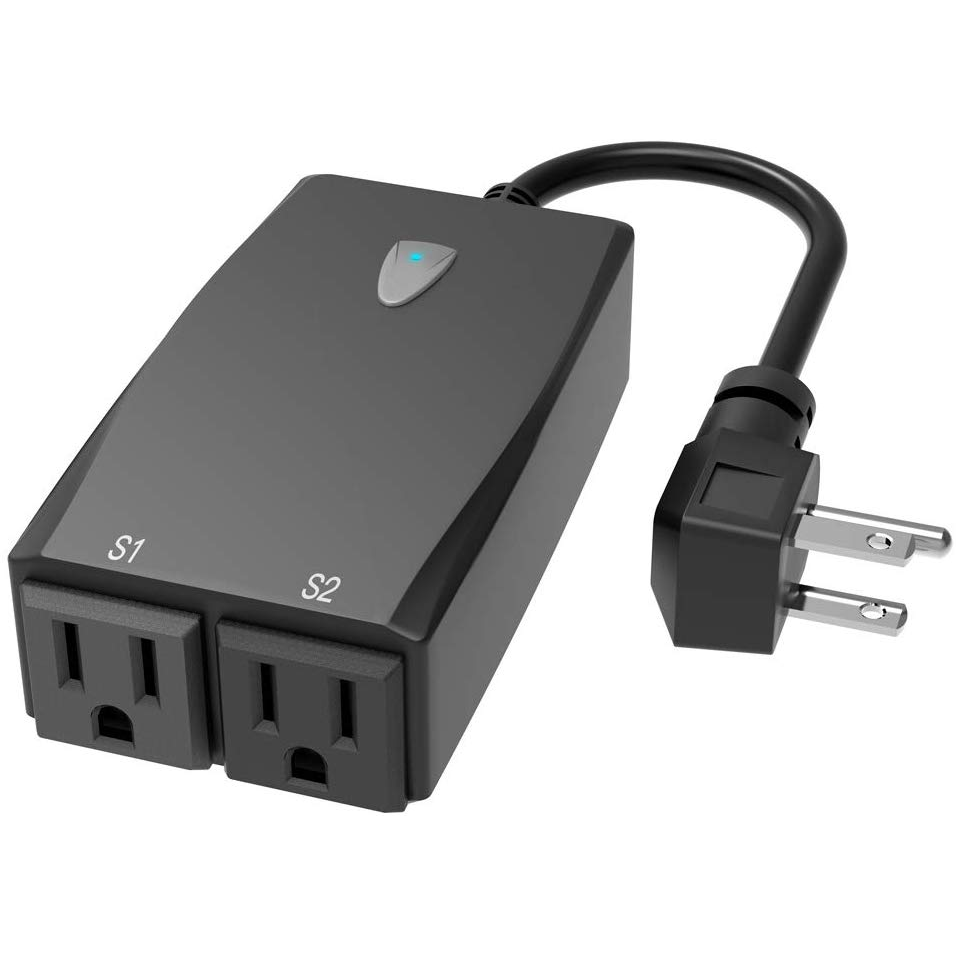Aoycocr X13 Outdoor Plug (2AKBP-X13)
All information provided is from Iprak documentation.
The device has 2 indicator LEDs under the button and 2 indiviually controllable outlets. FCC filing Tasmato wiki mentioned that it might not be able to use Tuya-Convert.
Product Image

GPIO Pinout
The GPIO pinout was learned from Iprak documentation. The ESP module is ESP8266-S3 and the FCC filing provided the pins
- EN
- TOUT
- GPIO12
- GPIO14
- GPIO13
- GPIO15
- GPIO0
- GPIO2
- GPIO4
- GPIO 5
- RX
- TX
- VCC
- GND
The pins are on alternate sides:
1 3 5 7 9 11 13
2 4 6 8 10 12 14
The GPIOs being used are:
- LED#1:GPIO0, inverted
- LED#2:GPIO2, inverted
- Button:GPIO13
- Relay1:GPIO15
- Relay2:GPIO12
Basic Configuration
The below YAML template is from Iprak documentation.
substitutions:
devicename: aoycocr_x13
proper_devicename: Aoycocr X13
esphome:
name: $devicename
esp8266:
board: esp01_1m
arduino_version: [email protected]
wifi:
ssid: !secret wifi_ssid
password: !secret wifi_password
ap:
captive_portal:
logger:
api:
ota:
# https://tasmota.github.io/docs/Components/
# https://templates.blakadder.com/aoycocr_X13.html
binary_sensor:
- platform: gpio
pin:
number: GPIO13
id: button
on_press:
- switch.toggle: relay1
- switch.toggle: relay2
- platform: status
name: $devicename
switch:
- platform: gpio
name: "$devicename 1"
pin: GPIO15
id: relay1
icon: "mdi:floor-lamp"
#Led2 represents switch 1
on_turn_on:
- output.turn_on: led2
on_turn_off:
- output.turn_off: led2
- platform: gpio
name: "$devicename 2"
pin: GPIO12
id: relay2
icon: "mdi:floor-lamp"
output:
- platform: gpio
pin: GPIO0
id: led2
inverted: yes
status_led:
pin:
number: GPIO2
inverted: yes